Potrebujeme váš súhlas na využitie jednotlivých dát, aby sa vám okrem iného mohli ukazovať informácie týkajúce sa vašich záujmov. Súhlas udelíte kliknutím na tlačidlo „OK“.
ASTM E537-12
Standard Test Method for The Thermal Stability of Chemicals by Differential Scanning Calorimetry
Automaticky preložený názov:
Štandardná skúšobná metóda pre tepelnú stabilitu chemických látok diferenčný skenovací kalorimetria
NORMA vydaná dňa 1.12.2012
Informácie o norme:
Označenie normy: ASTM E537-12
Poznámka: NEPLATNÁ
Dátum vydania normy: 1.12.2012
Kód tovaru: NS-47133
Počet strán: 7
Približná hmotnosť: 21 g (0.05 libier)
Krajina: Americká technická norma
Kategória: Technické normy ASTM
Kategórie - podobné normy:
Anotácia textu normy ASTM E537-12 :
Keywords:
differential scanning calorimetry, hazard potential, thermal analysis, thermal hazard, thermal stability, ICS Number Code 07.030 (Physics. Chemistry)
Doplňujúce informácie
| Significance and Use | ||||||||||||
|
5.1 This test method is useful in detecting potentially hazardous reactions including those from volatile chemicals and in estimating the temperatures at which these reactions occur and their enthalpies (heats). This test method is recommended as an early test for detecting the thermal hazards of an uncharacterized chemical substance or mixture (see Section 5.2 The magnitude of the change of enthalpy may not necessarily denote the relative hazard in a particular application. For example, certain exothermic reactions are often accompanied by gas evolution that increases the potential hazard. Alternatively, the extent of energy release for certain exothermic reactions may differ widely with the extent of confinement of volatile products. Thus, the presence of an exotherm and its approximate temperature are the most significant criteria in this test method (see Section 3 and Fig. 1). 5.3 When volatile substances are being studied, it is important to perform this test with a confining pressurized atmosphere so that changes of enthalpy that can occur above normal boiling or sublimation points may be detected. As an example, an absolute pressure of 1.14 MPa (150 psig) will generally elevate the boiling point of a volatile organic substance 100°C. Under these conditions exothermic decomposition is often observed. 5.4 For some substances the rate of enthalpy change during an exothermic reaction may be small at normal atmospheric pressure, making an assessment of the temperature of instability difficult. Generally a repeated analysis at an elevated pressure will improve the assessment by increasing the rate of change of enthalpy. 5.5 The four significant criteria
of this test method are: the detection of a change of enthalpy; the
approximate temperature at which the event occurs; the estimation
of its enthalpy and the observance of effects due to the cell
atmosphere and pressure.
|
||||||||||||
| 1. Scope | ||||||||||||
|
1.1 This test method describes the ascertainment of the presence of enthalpic changes in a test specimen, using minimum quantities of material, approximates the temperature at which these enthalpic changes occur and determines their enthalpies (heats) using differential scanning calorimetry or pressure differential scanning calorimetry. 1.2 This test method may be performed on solids, liquids, or slurries. 1.3 This test method may be performed in an inert or a reactive atmosphere with an absolute pressure range from 100 Pa through 7 MPa and over a temperature range from 300 to 800 K (27 to 527°C). 1.4 The values stated in SI units are to be regarded as standard. No other units of measurement are included in this standard. 1.5 There is no ISO standard equivalent to this test method. 1.6 This standard may involve hazardous materials, operations, and equipment. This standard does not purport to address all of the safety concerns associated with its use. It is the responsibility of the user of this standard to establish appropriate safety and health practices and determine the applicability of regulatory limitations prior to use. Specific safety precautions are given in Section 8. |
||||||||||||
| 2. Referenced Documents | ||||||||||||
|
Podobné normy:
Historická
1.12.2011
Historická
1.9.2013
Historická
1.1.2012
Historická
1.2.2013
Historická
1.3.2014
Historická
1.2.2013
Odporúčame:
Aktualizácia technických noriem
Chcete mať istotu, že používate len platné technické normy?
Ponúkame Vám riešenie, ktoré Vám zaistí mesačný prehľad o aktuálnosti noriem, ktoré používate.
Chcete vedieť viac informácií ? Pozrite sa na túto stránku.


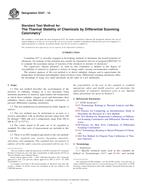
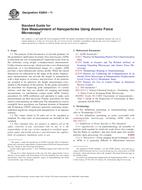 ASTM E2859-11
ASTM E2859-11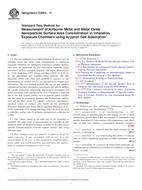 ASTM E2864-13
ASTM E2864-13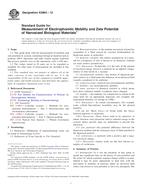 ASTM E2865-12
ASTM E2865-12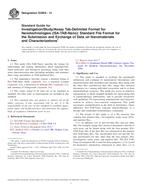 ASTM E2909-13
ASTM E2909-13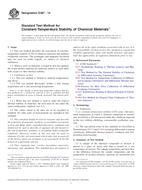 ASTM E487-14
ASTM E487-14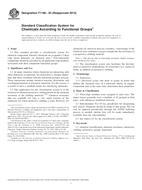 ASTM F1186-03(2013)..
ASTM F1186-03(2013)..
 Cookies
Cookies
